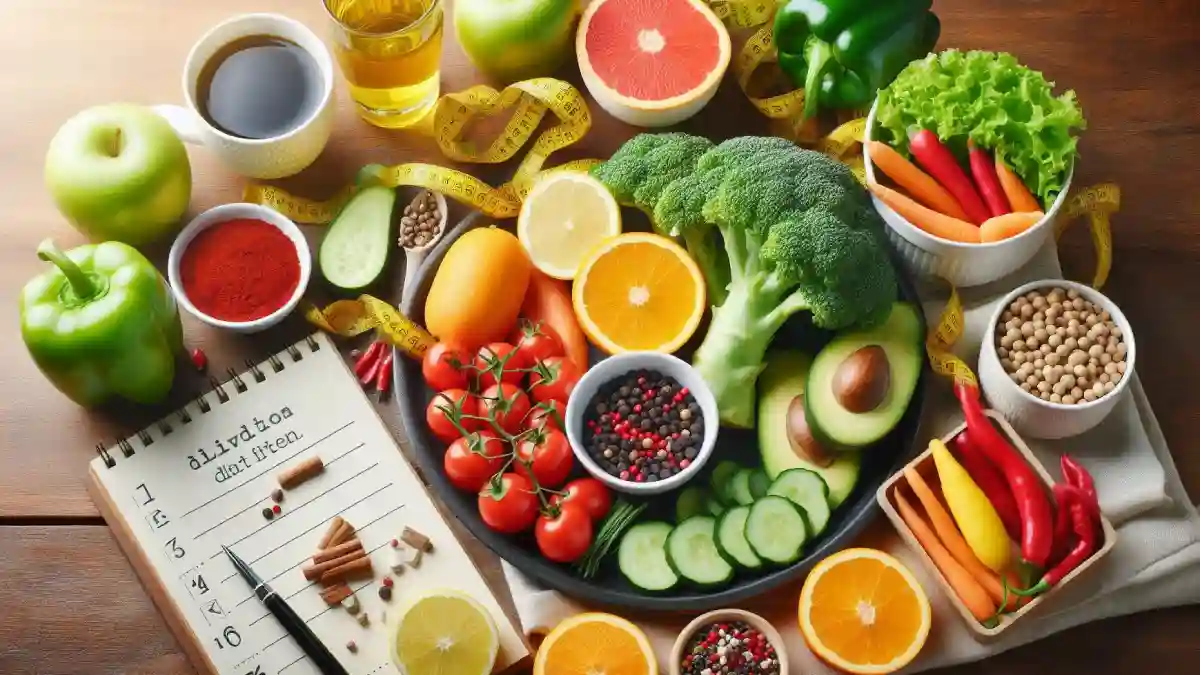Embarking on a weight loss journey can be challenging, but with the right healthy diet plan, you can achieve your goals sustainably. This article outlines an effective and balanced approach to dieting that promotes weight loss while ensuring you receive essential nutrients.
Understanding Weight Loss
Before diving into specific diet plans, it’s important to understand the basic principle of weight loss: consuming fewer calories than you burn. However, this doesn’t mean you should resort to extreme dieting. A healthy diet plan focuses on nutrient-dense foods that nourish your body, keep you satisfied, and support long-term health.
Key Components of a Healthy Diet Plan
Balanced Macronutrients
A healthy diet should include a balance of macronutrients: carbohydrates, proteins, and fats.
- Carbohydrates: Choose whole grains, fruits, and vegetables. These foods are high in fiber, which helps you feel full longer.
- Proteins: Incorporate lean proteins like chicken, fish, beans, and legumes. Protein is essential for muscle repair and can aid in reducing cravings.
- Fats: Opt for healthy fats from sources like avocados, nuts, seeds, and olive oil. These fats are vital for brain health and hormone regulation.
Portion Control
Understanding portion sizes is crucial for weight loss. Use smaller plates and bowls to help control portions, and try to listen to your body’s hunger cues. Eating mindfully can prevent overeating.
Hydration
Staying hydrated is often overlooked but plays a significant role in weight loss. Drinking water can help control hunger and support your metabolism. Aim for at least eight glasses of water a day, and consider herbal teas for variety.
Meal Planning and Preparation
Planning your meals in advance can help you make healthier choices and avoid last-minute unhealthy options. Try to prepare meals for the week ahead, focusing on whole foods and balanced nutrition.
Incorporating Fruits and Vegetables
Fruits and vegetables should be the cornerstone of any healthy diet. They are low in calories but high in nutrients, helping to fill you up without adding excess calories. Aim to fill half your plate with these colorful foods at every meal.
Sample Healthy Diet Plan for Weight Loss
Here’s a simple, balanced one-week meal plan to get you started:
Day 1:
- Breakfast: Greek yogurt with berries and a sprinkle of granola
- Lunch: Quinoa salad with chickpeas, cucumber, and cherry tomatoes
- Snack: Carrot sticks with hummus
- Dinner: Grilled chicken with steamed broccoli and brown rice
Day 2:
- Breakfast: Oatmeal topped with banana and almond butter
- Lunch: Spinach salad with grilled shrimp and avocado
- Snack: A small apple with a handful of almonds
- Dinner: Baked salmon with asparagus and quinoa
Day 3:
- Breakfast: Smoothie with spinach, banana, and protein powder
- Lunch: Whole grain wrap with turkey, lettuce, and avocado
- Snack: Cucumber slices with tzatziki
- Dinner: Stir-fried tofu with mixed vegetables and brown rice
Day 4:
- Breakfast: Scrambled eggs with spinach and whole-grain toast
- Lunch: Lentil soup with a side salad
- Snack: Greek yogurt with honey and walnuts
- Dinner: Grilled vegetable kebabs with quinoa
Day 5:
- Breakfast: Chia seed pudding with almond milk and mixed berries
- Lunch: Turkey and vegetable stir-fry
- Snack: Celery sticks with peanut butter
- Dinner: Zucchini noodles with marinara sauce and grilled chicken
Day 6:
- Breakfast: Smoothie bowl topped with fresh fruit and nuts
- Lunch: Brown rice bowl with black beans, corn, and salsa
- Snack: A small orange or a handful of grapes
- Dinner: Baked cod with sweet potato and green beans
Day 7:
- Breakfast: Whole grain pancakes with fresh strawberries
- Lunch: Mixed greens with grilled chicken and balsamic vinaigrette
- Snack: Air-popped popcorn
- Dinner: Quinoa stuffed bell peppers
Tips for Success
- Stay Consistent: Consistency is key in any weight loss plan. Stick to your meal plan but allow for occasional treats in moderation.
- Stay Active: Combine your healthy diet with regular exercise to enhance weight loss and improve overall health.
- Get Support: Consider joining a weight loss group or finding a buddy to keep you motivated.
Conclusion
Adopting a healthy diet plan for weight loss is about making informed choices and developing sustainable habits. Focus on whole foods, balanced nutrition, and mindful eating. Remember, every small step counts toward your weight loss goals. Consult with a healthcare provider or a registered dietitian before starting any new diet plan to ensure it meets your individual needs. Happy dieting!

